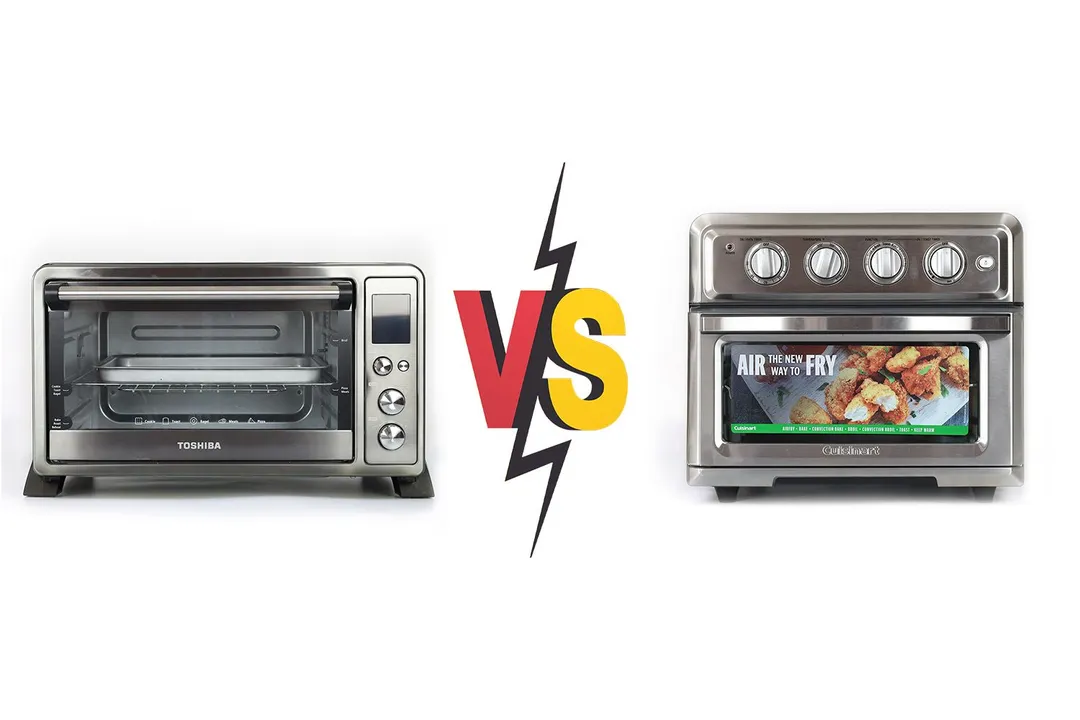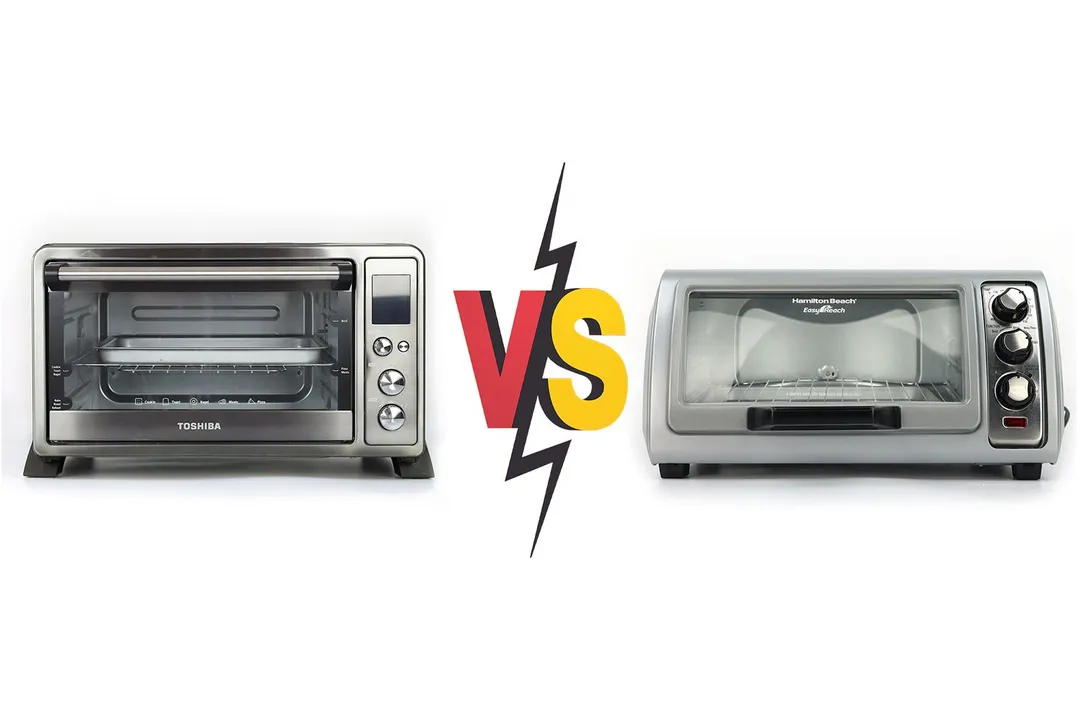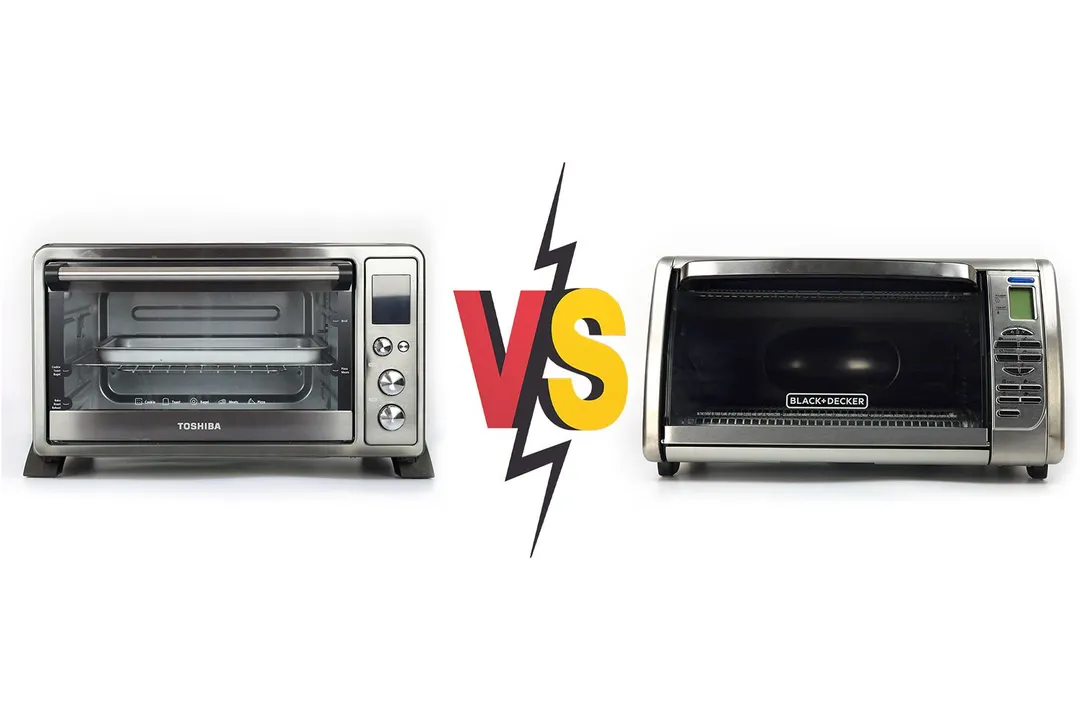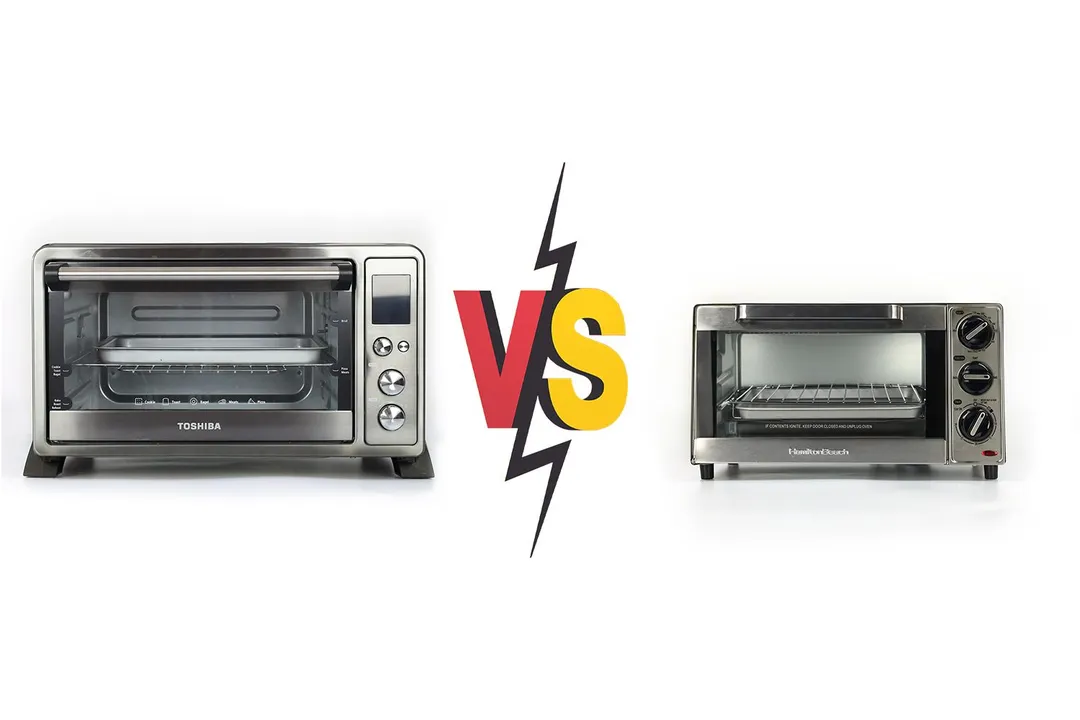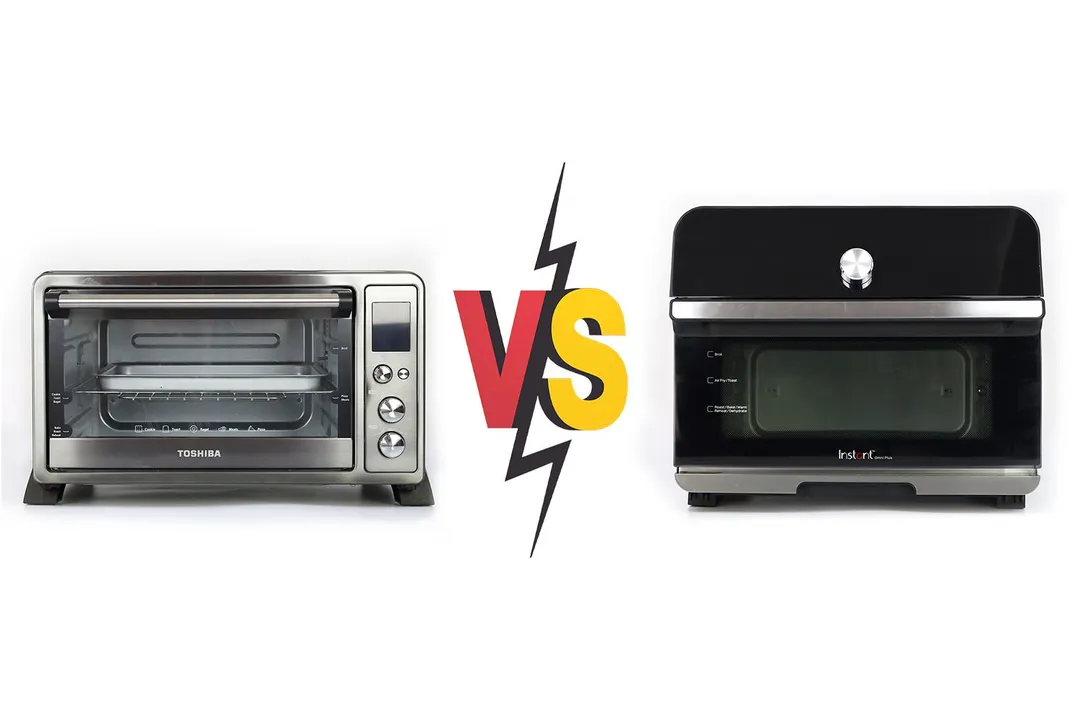Our recommendations are made independently through Research & Testing. We may receive commissions from purchases made via our links.
Toshiba AC25CEW-BS vs Ninja Foodi XL Pro Toaster Oven Side-by-Side Comparison
Toshiba AC25CEW-BS vs Ninja Foodi XL Pro Toaster Oven. Both are present in our top list, one is our best-value pick and the other is our best large pick.
Toshiba AC25CEW-BS
Tested Using Methodology v1.0Ninja Foodi XL Pro
Tested Using Methodology v1.0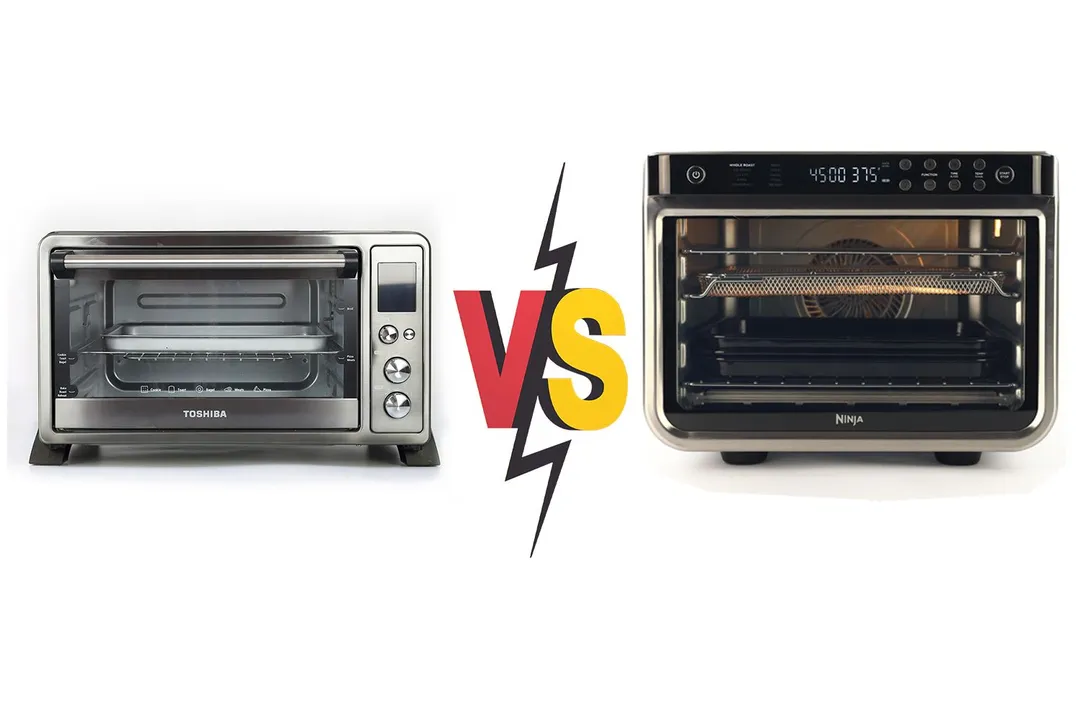
Overall Verdict
The Toshiba AC25CEW-BS Convection Toaster Oven and the Ninja Foodi XL Pro Air Fryer Toaster Oven (DT201) both present in our top list under different categories. Looking at the overall score, the Ninja—as our best large pick— is definitely the winner. However, the Toshiba offers a lot of value in all aspects including design, usability, and especially performance at more than half the price.
The Toshiba has ventilation slats on all sides which is helpful in keeping the oven from overheating. Meanwhile, the Ninja has a thicker casing for better heat insulation.
The AC25CEW-BS has four nichrome heating elements which is less than what the Foodi XL Pro has but still enough for its size. However, it lacks the internal lighting that the Ninja has.
The Toshiba has a straightforward control panel that accomplishes what it set out to do. The Ninja, however, has much better-designed cooking presets and more freedom for control with its toggle switches. Both toaster ovens have an unobstructed cooking chamber and a slide-out crumb tray so they can be cleaned as easily as one another.
For its price, the Toshiba delivered a very solid performance in our cooking tests. The Ninja did perform better with its higher power output and strongest convection settings but that didn’t take away from the Toshiba.
Pros & Cons
- Highly affordable
- Good value in terms of functionality and accessories
- Lightweight but sturdy design
- Easy-to-turn knobs
- High-contrast digital display
- Cool-touch door handle
- Easy-to-clean stainless steel exterior
- Straightforward and informative control panel
- Tailored cooking functions
- Family-sized capacity
- Tray-level suggestions
- Sturdy construction
- Well-designed accessories
- Easy-to-clean stainless steel exterior
- Cool-touch door handle
- No safety mechanism for the door
- Convection fan isn’t all-applicable
- No internal lighting
- No safety mechanism for the door
- Faulty interior light upon received
Key Specs
Where to Buy
*You help support HealthyKitchen101's product testing and reviews by purchasing from our retail partners.
Analysis and Test Results
Performance
Toast
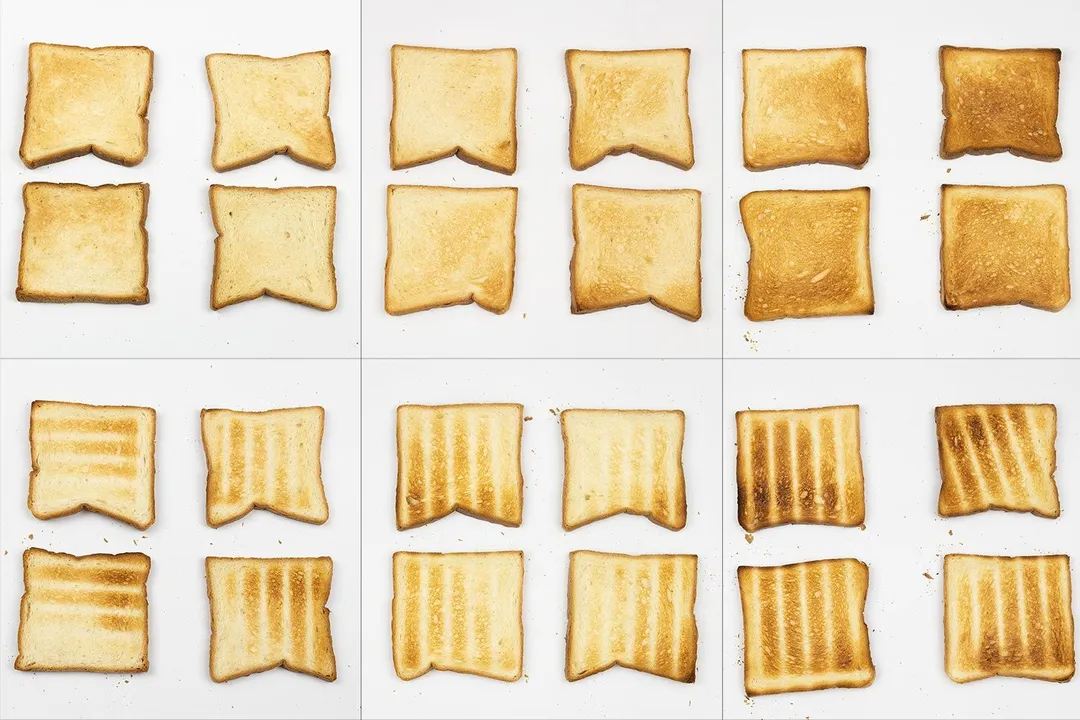
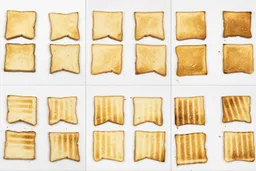
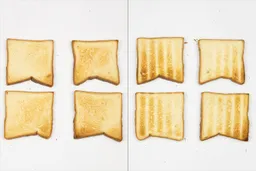

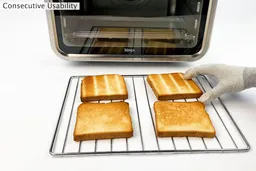
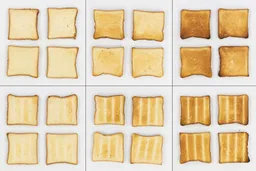
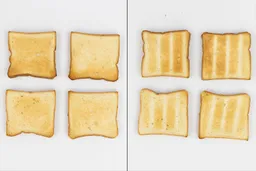
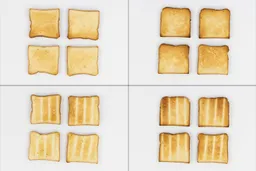
Pizza
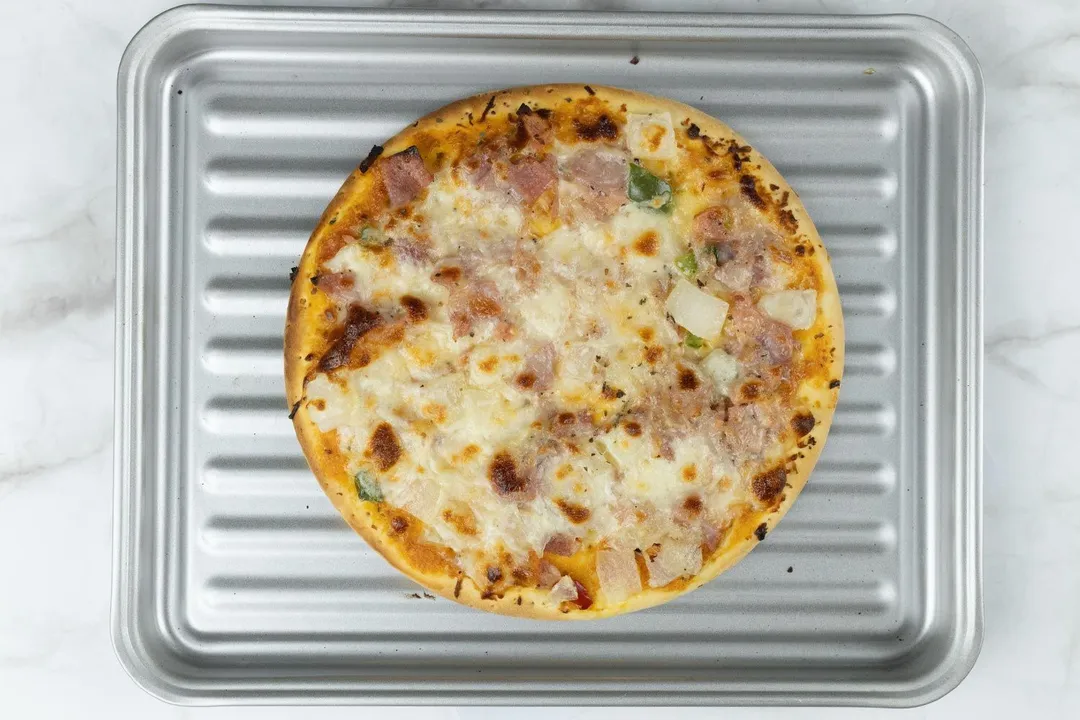
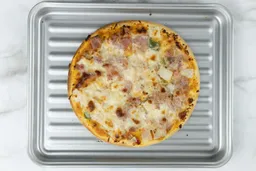

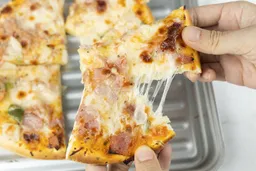
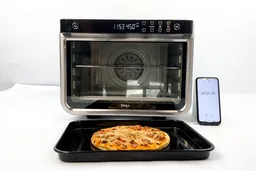
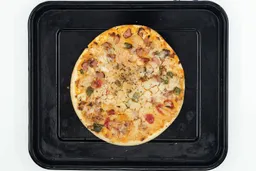
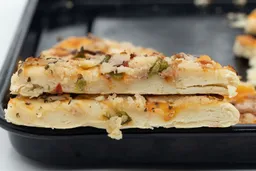

Whole Roasted Chicken
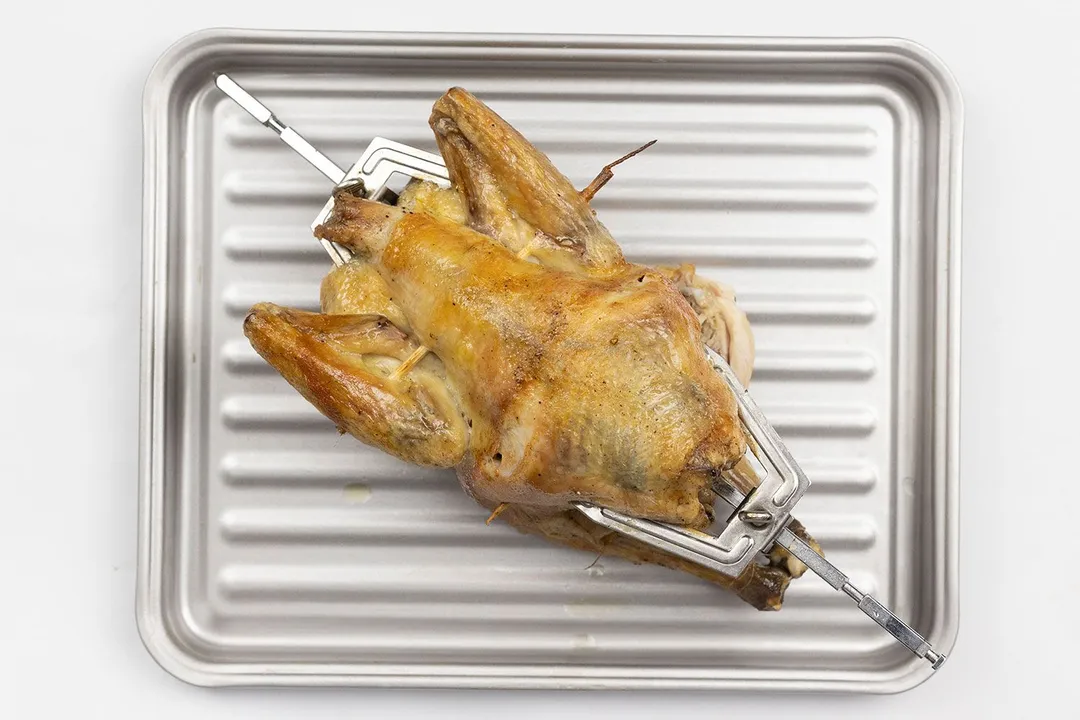
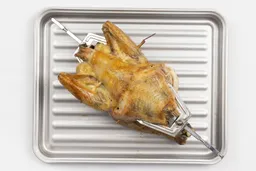
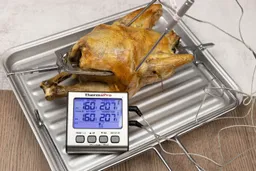
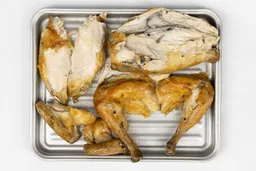
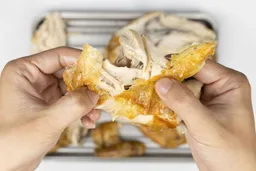
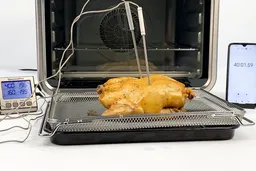
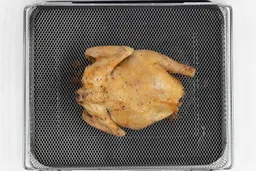
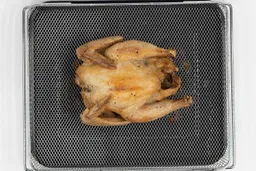
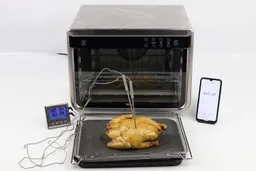
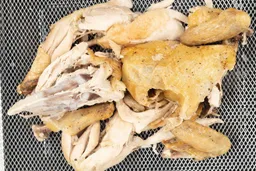
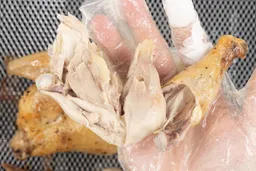
Baked French Fries
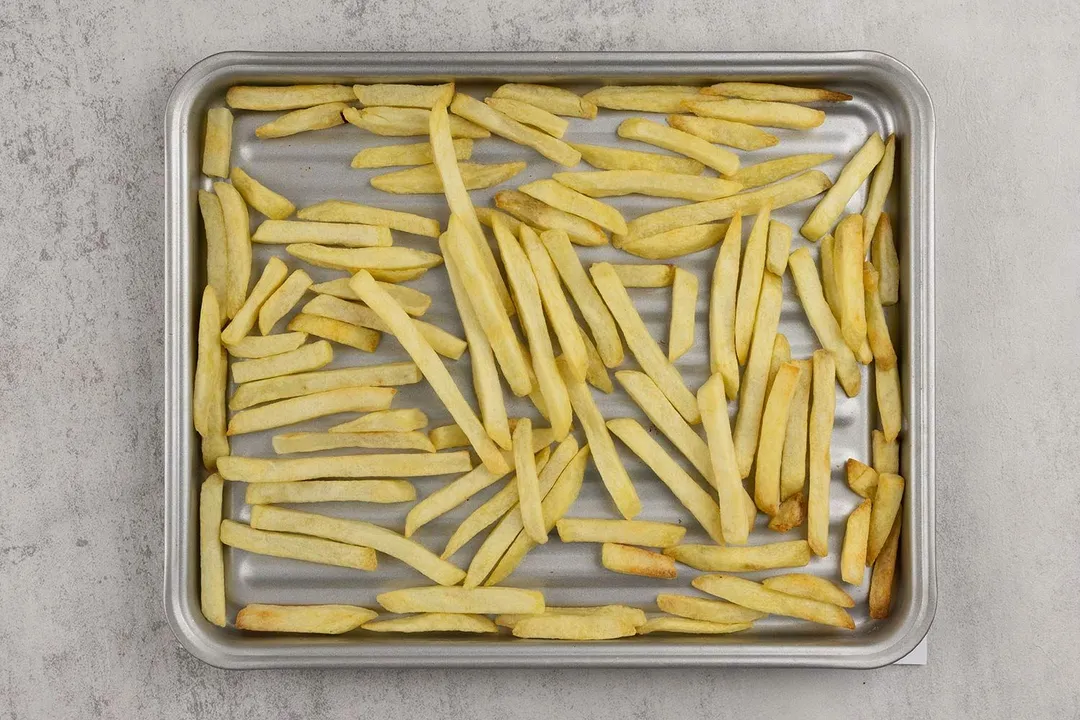
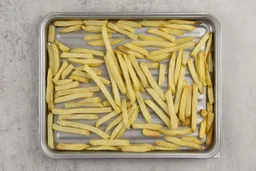


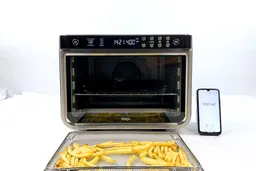
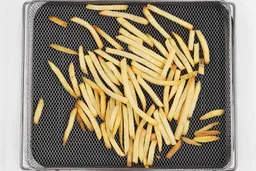

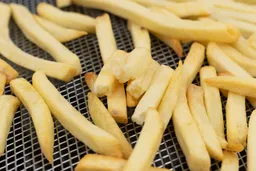
Design
In the Box
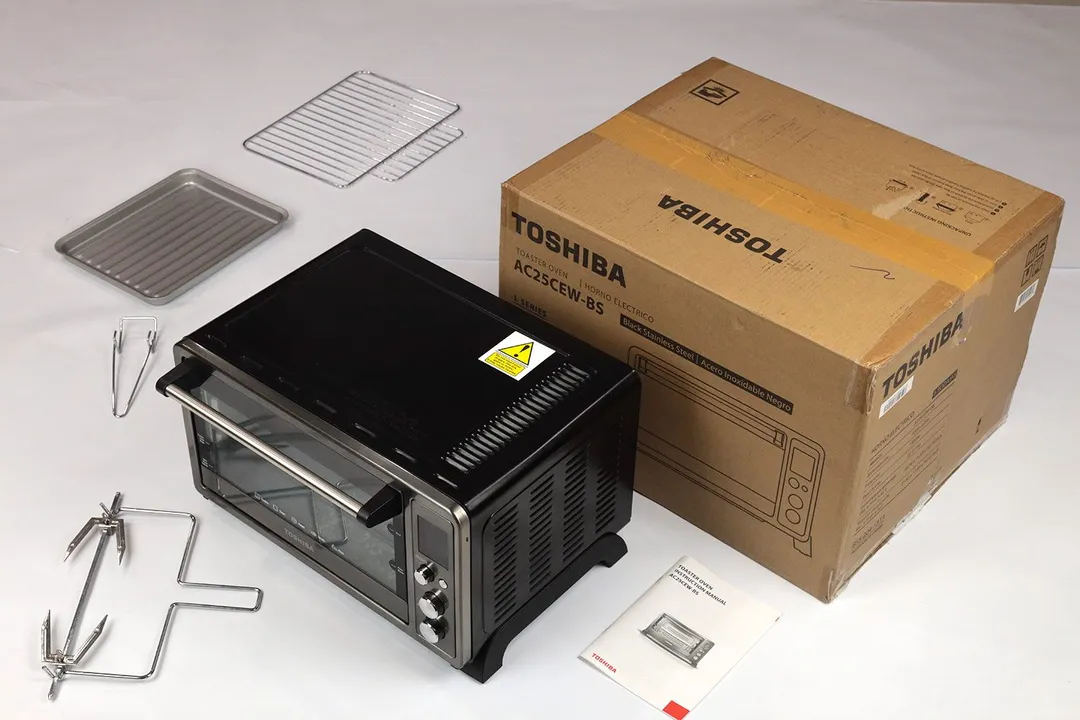
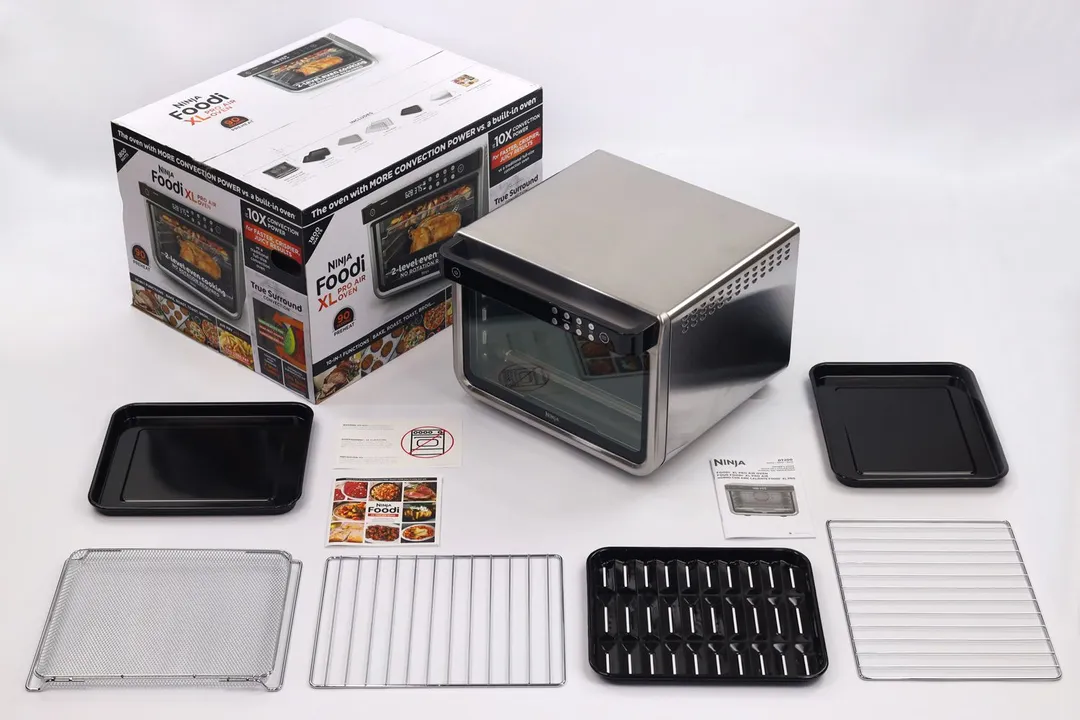
Exterior
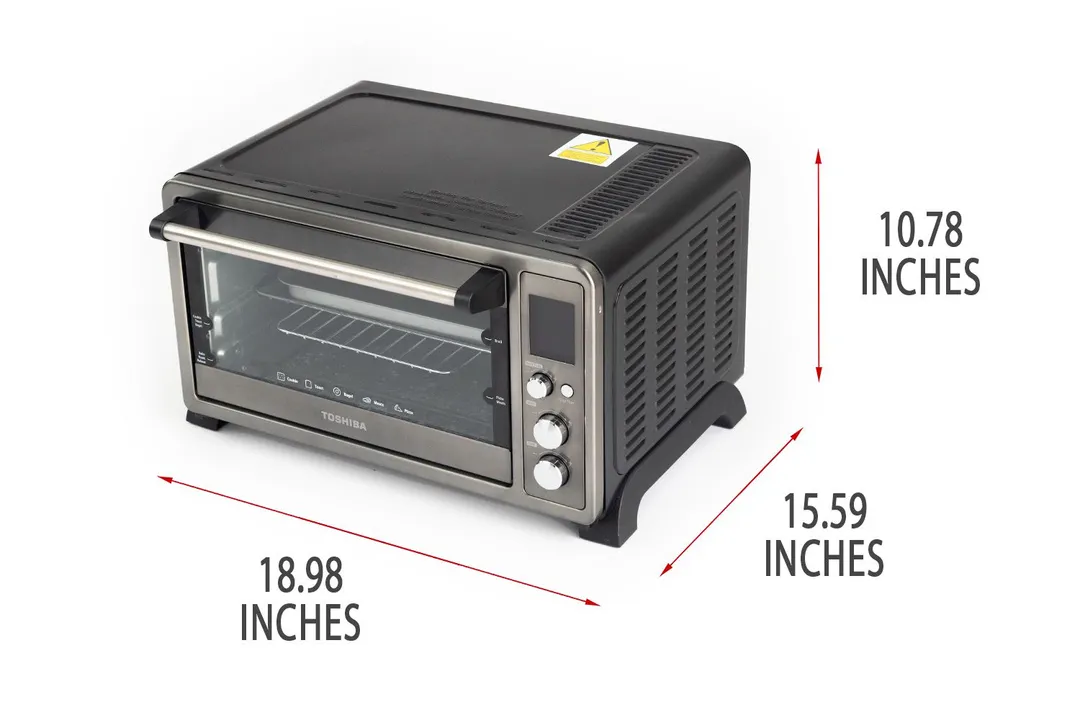
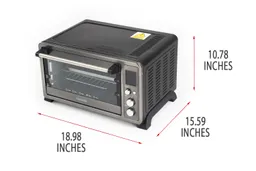
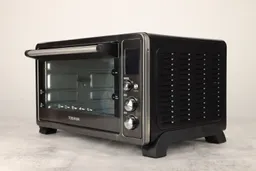
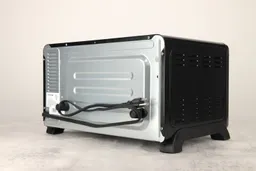


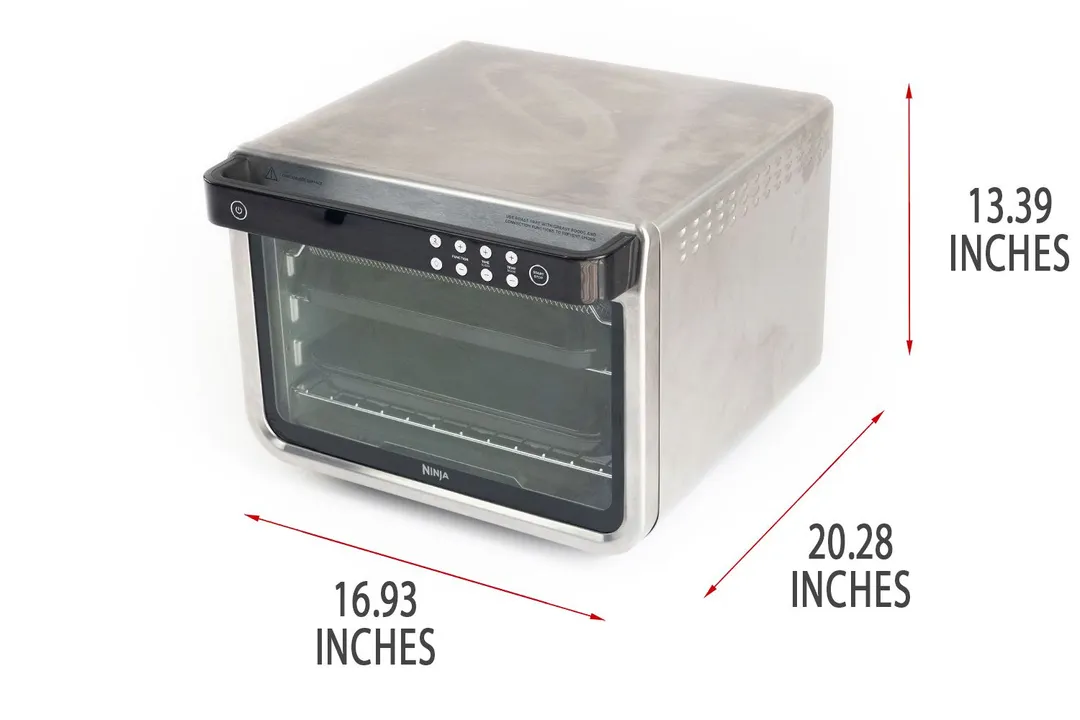
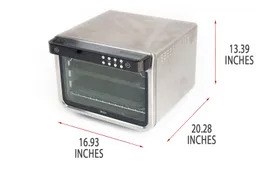
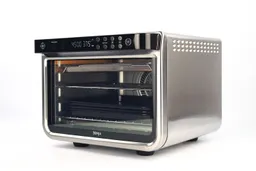
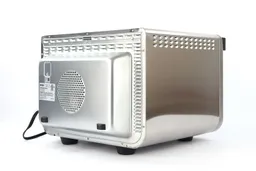
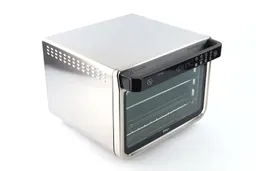
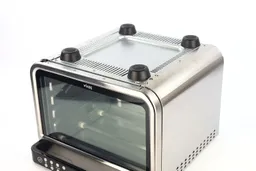
Control Panel
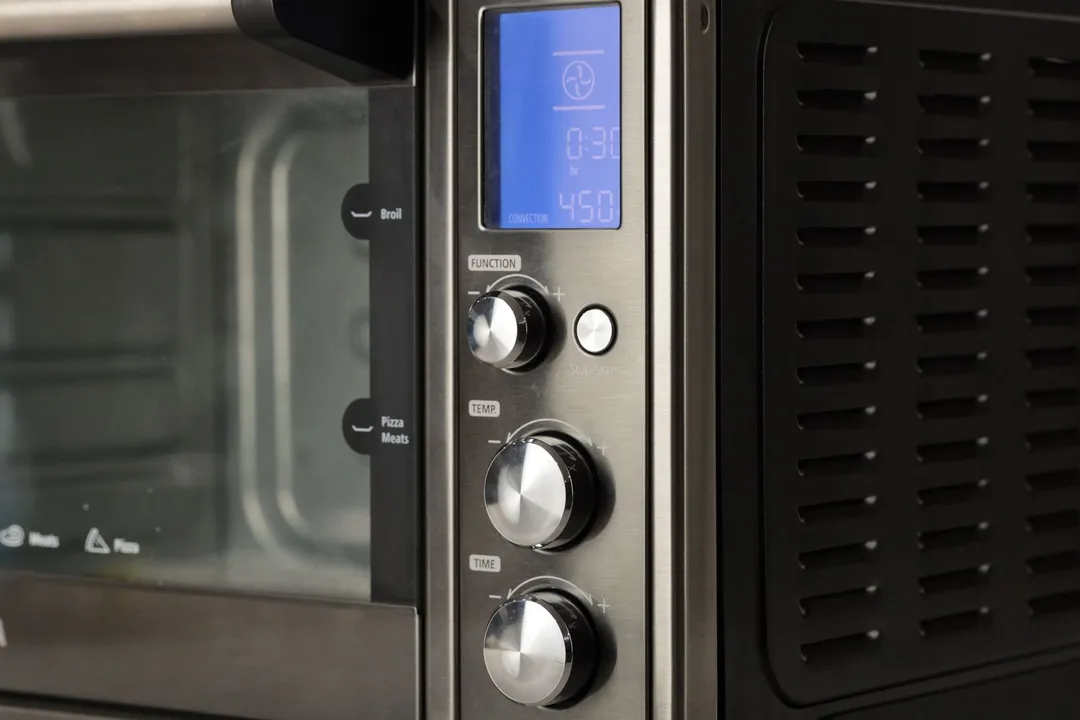
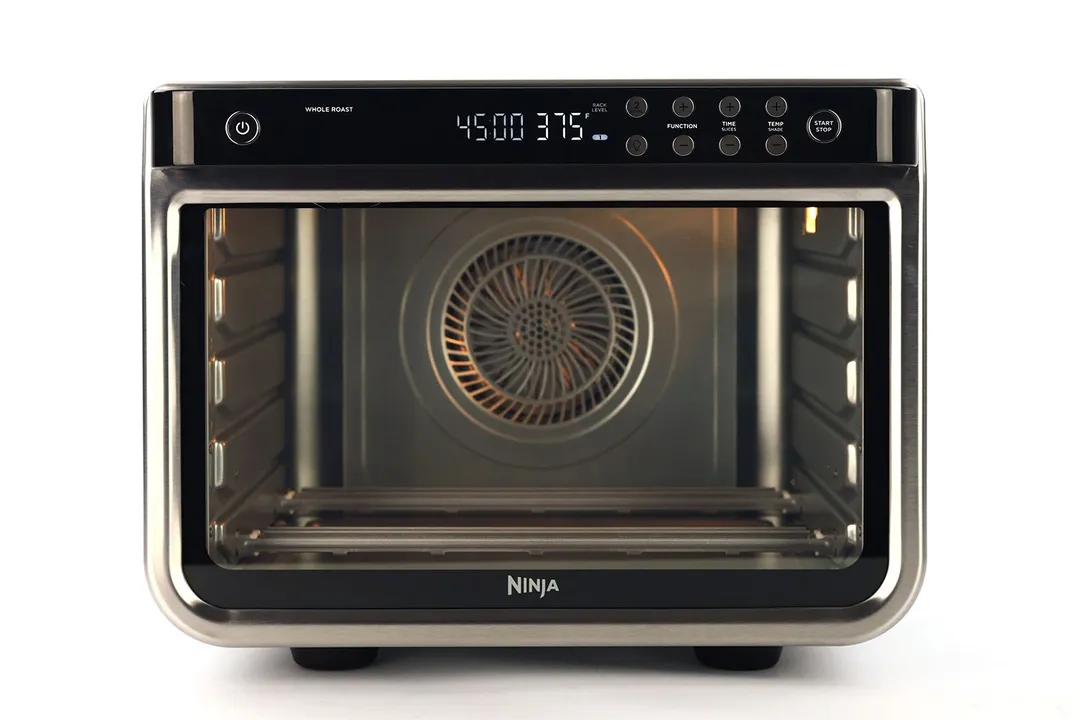
Cooking Functions
Interior
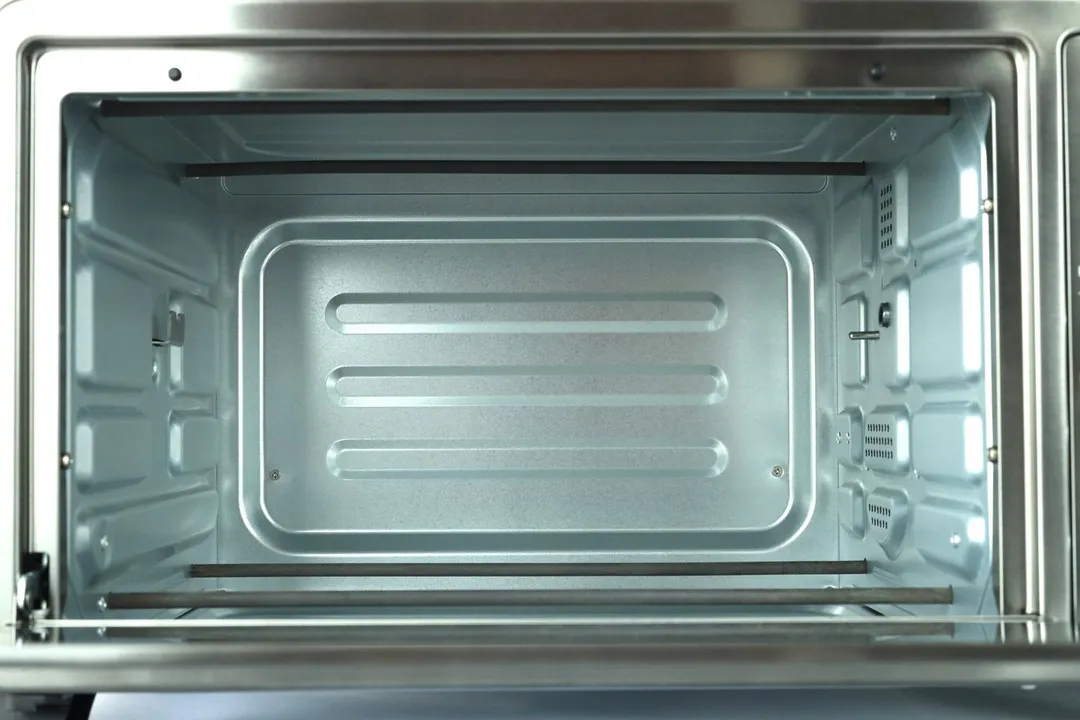
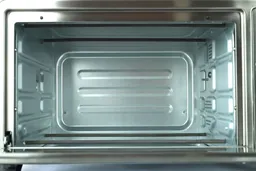
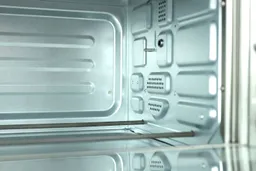
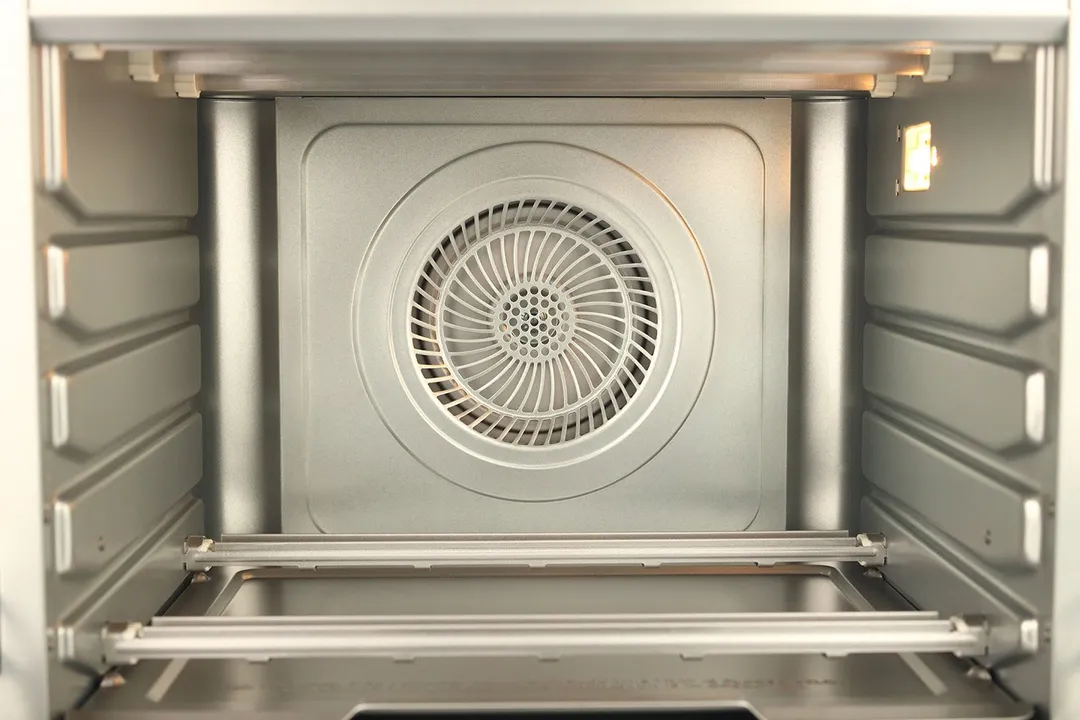
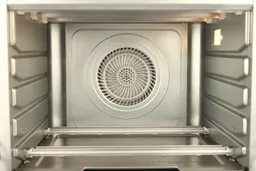
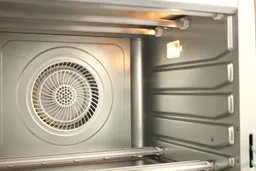
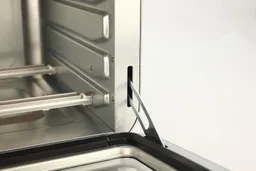
Power Cord
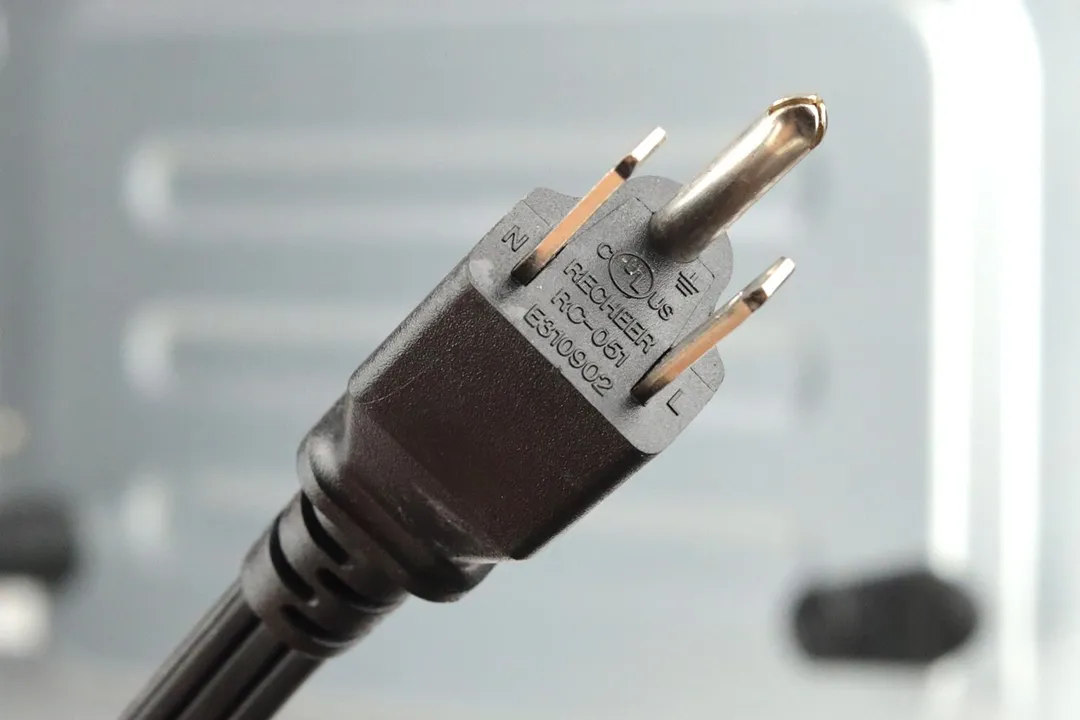
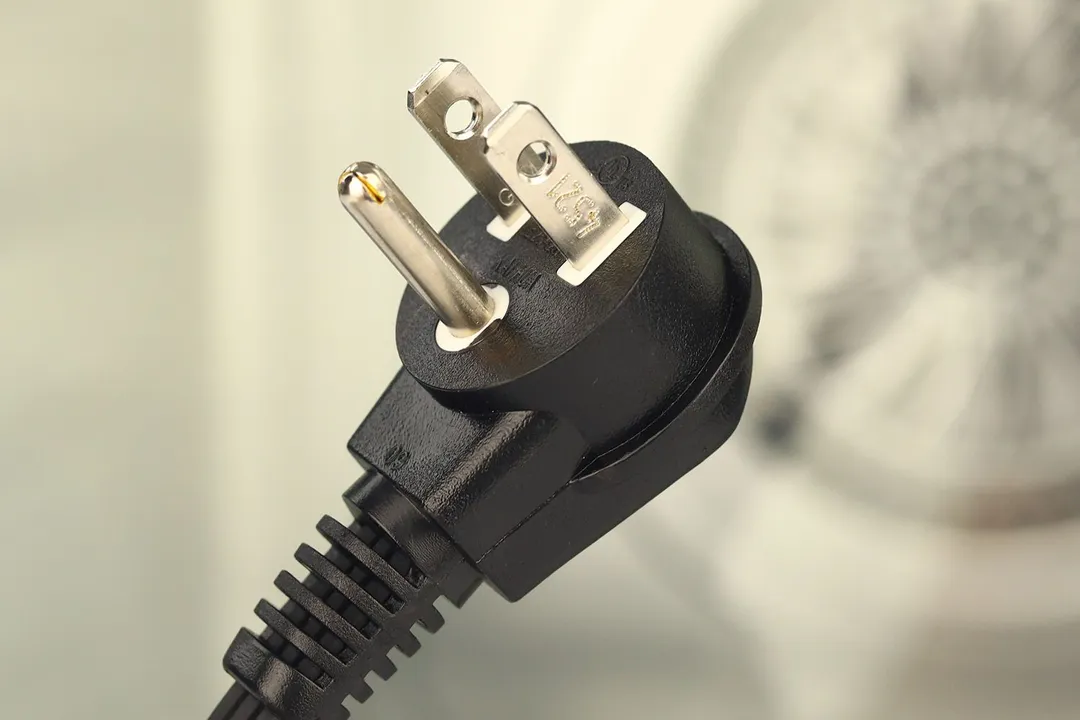
Accessories
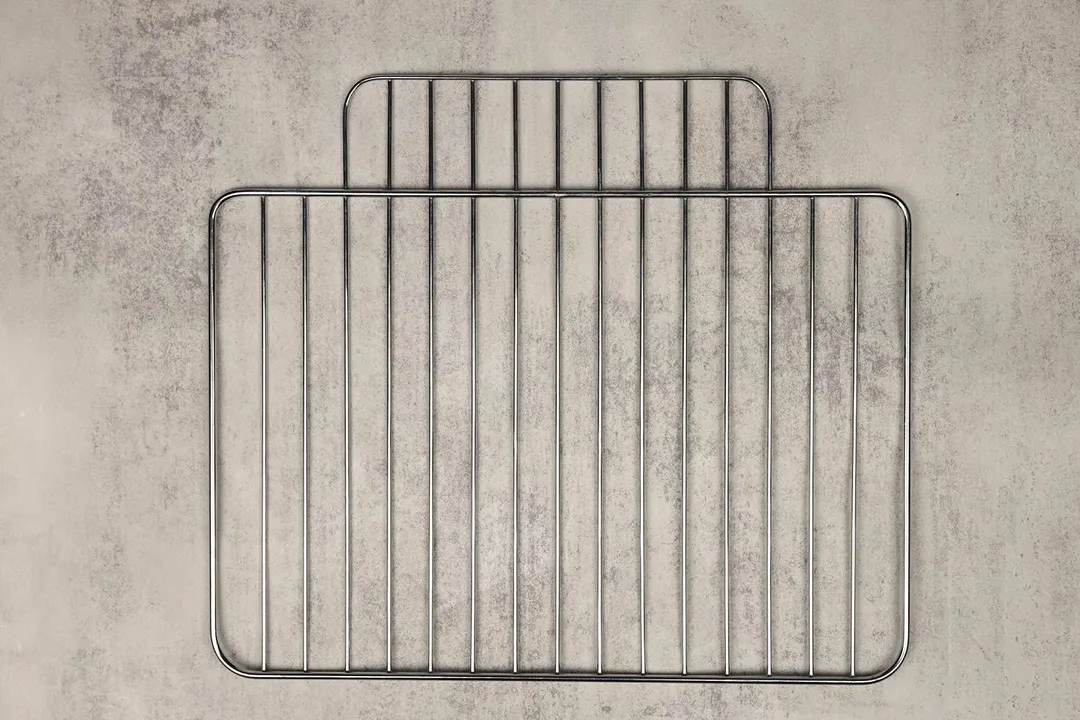
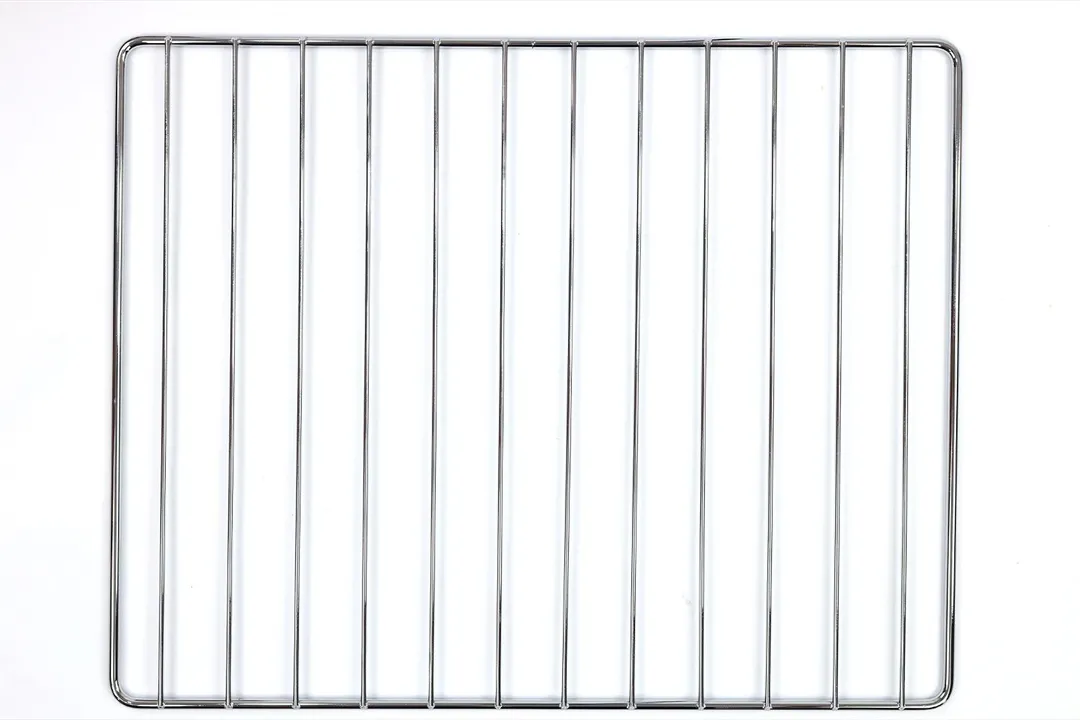
Build Quality
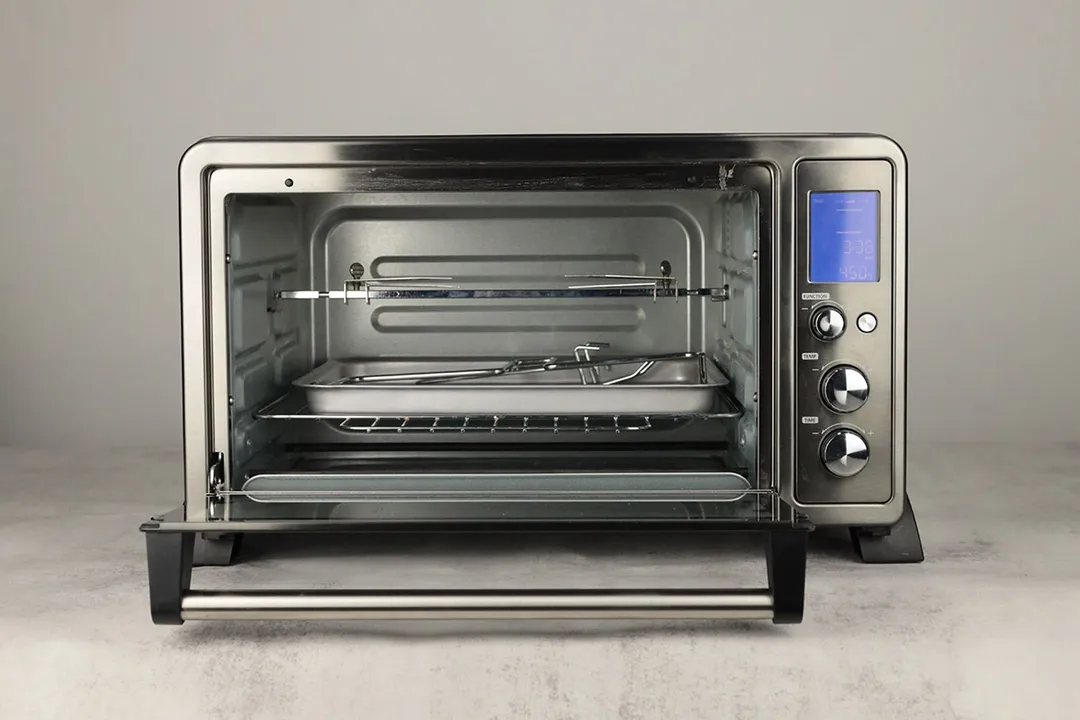
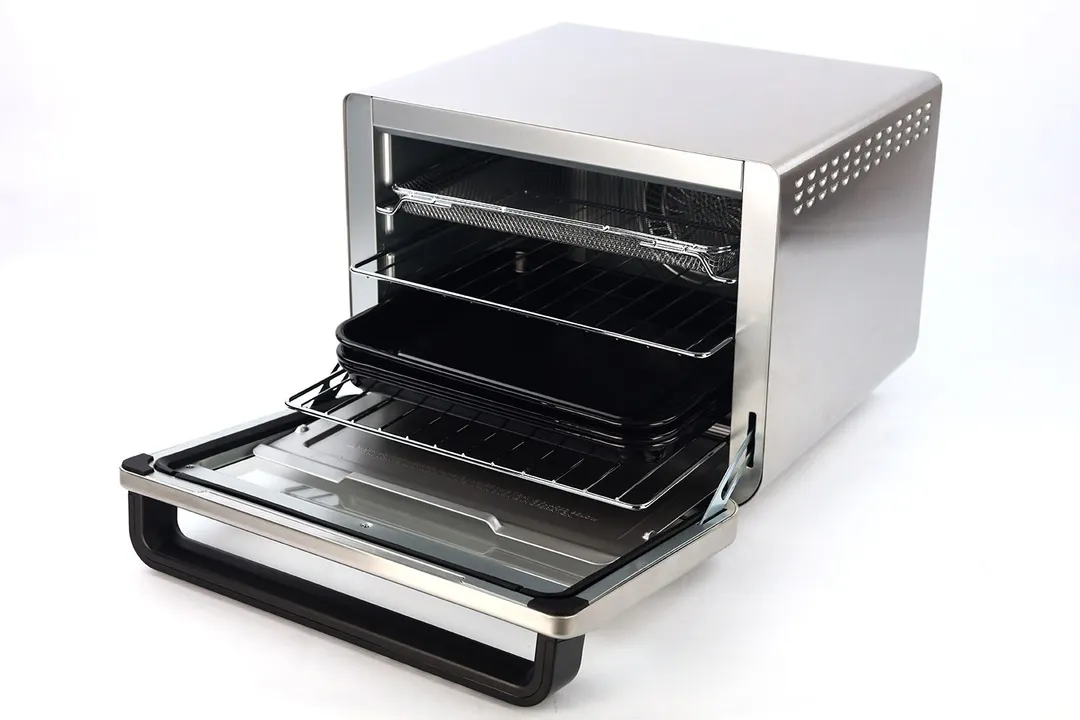
Capacity
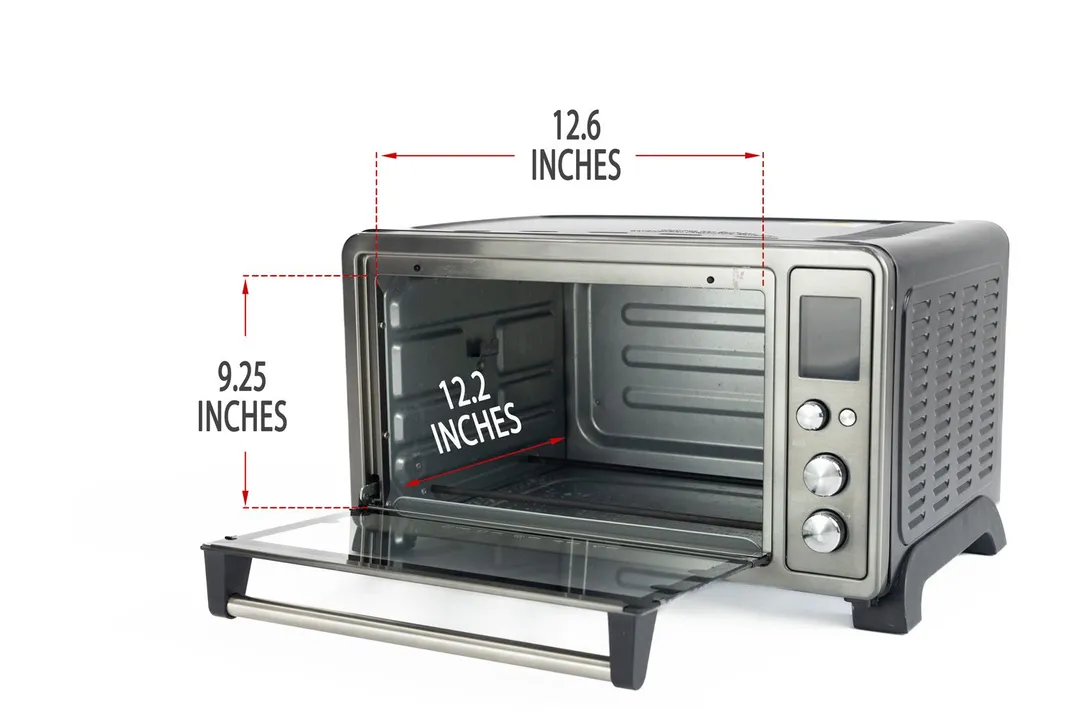
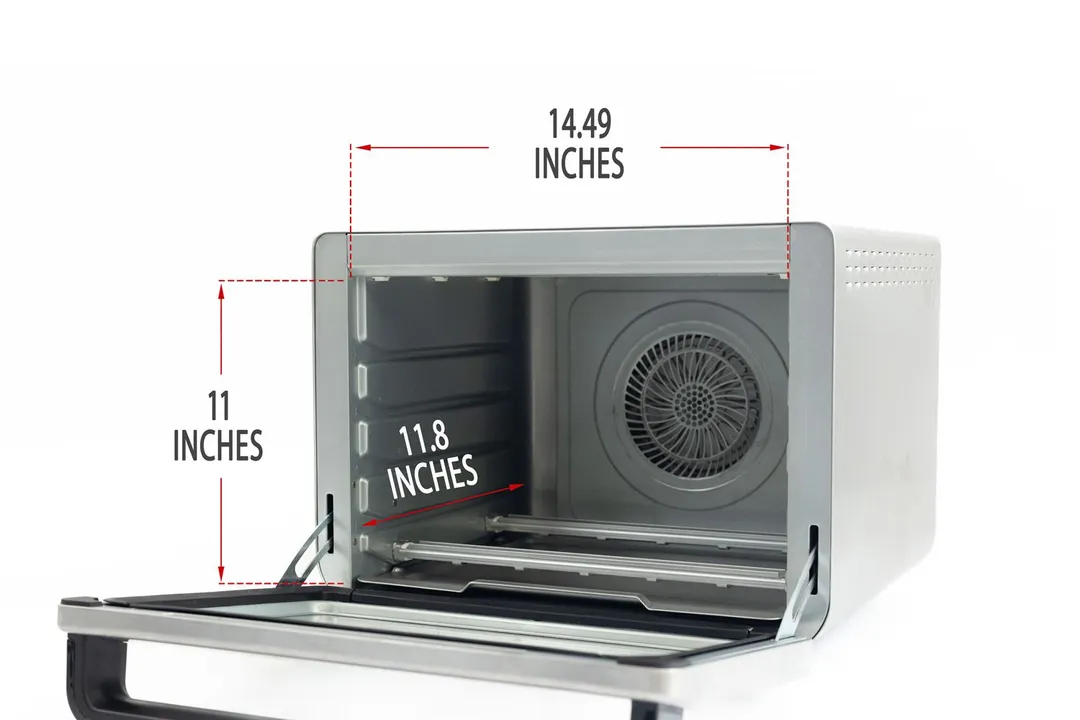
Usability
User Control
Ease of Use
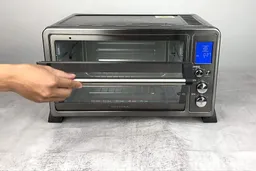

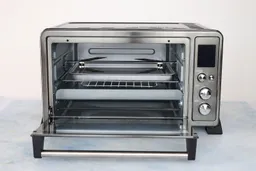
Cleanability
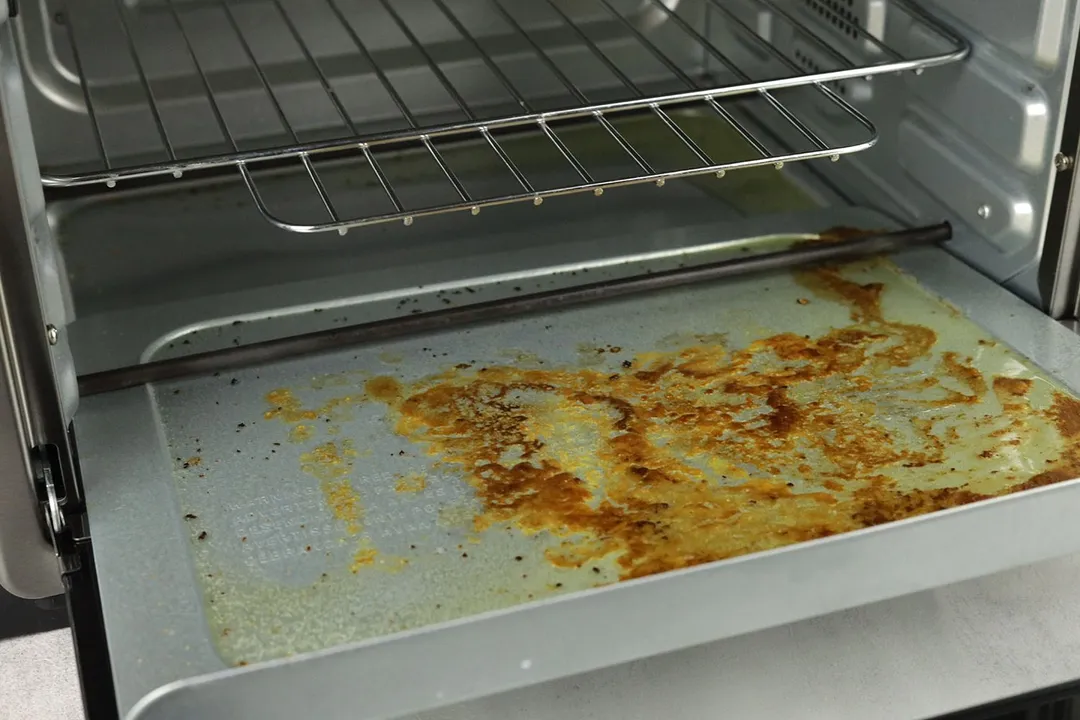
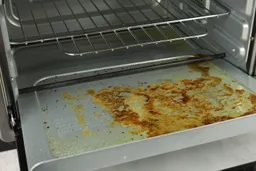
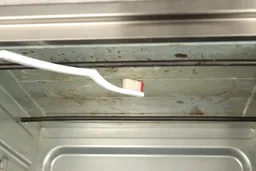
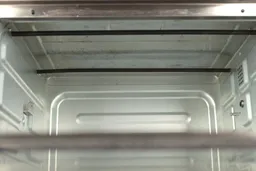
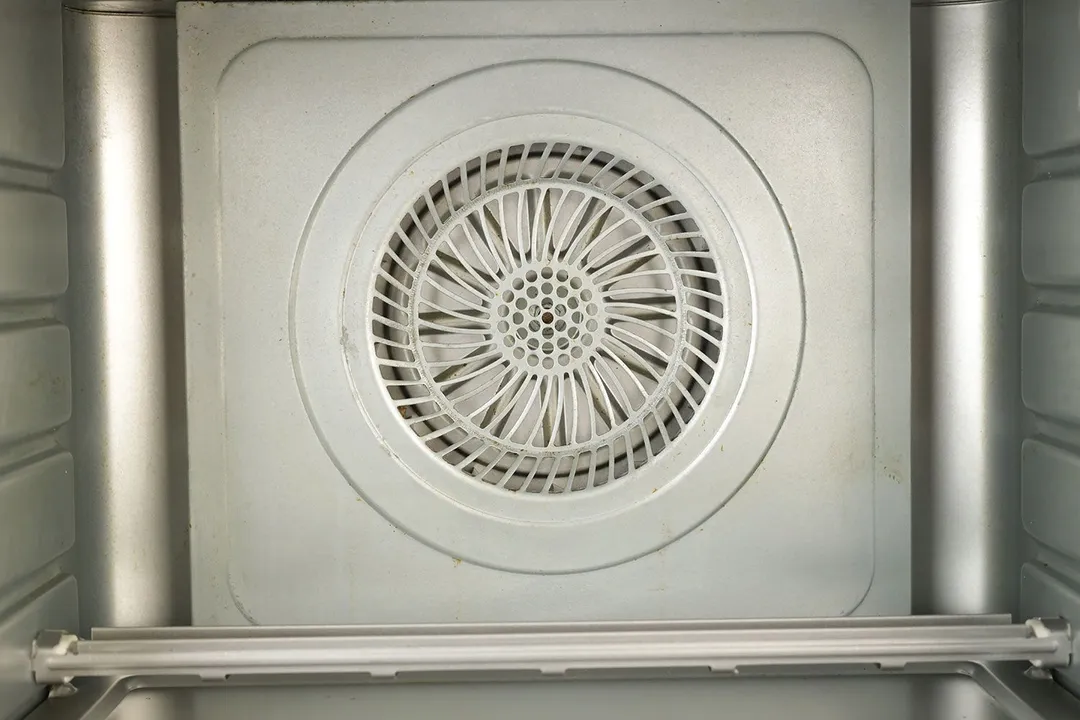
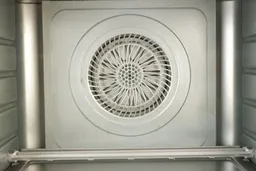
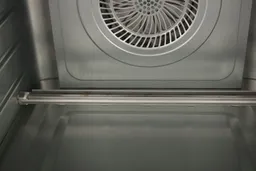

Behind the Comparison
Alan Nguyen is a writer and product reviewer at HealthyKitchen101. His major in English language teaching taught him to present concise information. In addition to his cooking hobby, he values the practical aspects of household appliances.
Lap is Head of the Research, Testing, and Review Team (RTR Team) at HealthyKitchen101.com, where he directs and supervises the testing of kitchen gadgets and appliances.
Tuyet Pham is an award-winning Saigonese chef passionate about delicious and healthful foods. At HealthyKitchen101, she develops recipes and collaborates with our Research, Testing, and Review lab to evaluate the performance of cooking appliances. Her assessments add a strong authoritative voice to our product scoring process.
Nguyen Ntk is a graphic designer, photographer, and videographer whose philosophy centers around respecting and celebrating the beauty of reality. Through his lenses, Nguyen strives to capture the true essence of objects and events, showcasing and highlighting authentic features without distortion or exaggeration.




